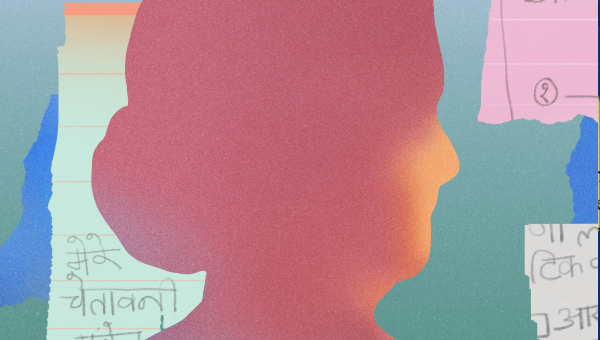This month, the National Crimes Record Bureau (NCRB) released the Accidental Deaths & Suicides in India (ADSI) report for the year 2022. The ADSI report is the only publicly available dataset in the country on deaths by suicide.
The rate of suicide has seen a dramatic rise since the first published ADSI report in 1966. In 2022, the suicide rate increased by 4.2% from 2021, from 12 to 12.4 per 100,000 population (1,64,033 to 1,70,924) – the highest recorded rate over 56 years.
This is the same year that the Government of India launched the National Suicide Prevention Strategy, a commendable move to articulate a country-wide approach to suicide prevention. The strategy outlined a clear target to reduce suicide deaths by 10% of the baseline year of 2020.
The steep rise in the rate, however, widens the gap to meeting this target.
Here are some notable observations from this year’s data:
Suicide and age
Suicide rates were up across all age groups on an average of 5%, except for young people below the age of 18, which saw a slight dip in the suicide rate.
Young adults aged 18-30 years accounted for 35% of all suicides in 2022, the biggest share. This was closely followed by adults aged 30 to 45 years, who constituted 32% of the proportion of all suicides.
Both age groups collectively accounted for 67% of suicide deaths in the country.
Suicide and geography
Suicide rates varied substantially across the country, from as low as 0.6 per 100,000 population in Bihar to as high as 43.1 per 100,000 in Sikkim.
This variance was significant and most pronounced in smaller states or union territories where the population is low, resulting in higher reported rates.
Among the geographically larger and more populous states, Kerala had the highest rate at 28.5 per 100,000 population, followed by Chhattisgarh at 28.2, and then Telangana at 26.2.
Maharashtra, Tamil Nadu, and Madhya Pradesh, the top three states in absolute numbers, collectively accounted for one-third of all suicides in the country and had suicide rates of 18.1, 25.9, and 17.9 respectively.
This map comparing year-on-year changes in suicides between 2021 and 2022 reveals some noteworthy trends.
The biggest increase in suicide was in Mizoram, where suicides rose by 54.5% between 2021 and 2022. Neighbouring Manipur in the Northeast reported the most significant decline at 47%. Variances in absolute suicide numbers in smaller states are likely to be significant.
Among the larger states, Himachal Pradesh had a considerable drop in reported suicides, decreasing by 28% between 2021 and 2022. Bihar, West Bengal, and Punjab also reported a decline in suicides by 15%, 6.2%, and 6.1%, respectively.
The most prominent increase in suicides was observed in Uttar Pradesh, a population dense state, where suicides rose by 38%. The third-highest rise was in Jammu and Kashmir at 31% followed by Jharkhand at 19.5%.
Reported causes of suicide
Suicides do not occur due to a single reason. Nor do they take place in a vacuum, isolated from social, cultural, systemic and economic factors.
NCRB reports on suicide tends to misleadingly attribute deaths to a single cause.
Nearly 75% of all suicides are attributed to the following causes.
Family-related problems and distress caused due to physical and mental health conditions accounted for a little over 50% of all causes of suicide.
Marriage and relationship related concerns combined were reported to be the third cause of death. This was one of the only causes where the number of deaths by suicide among men were closely comparable to suicide deaths among women. And for dowry-related reasons, suicide deaths among women outstripped men.
Both alcohol and substance-use as well as economic and financial insecurity (debt, poverty and unemployment) were the reason for 14% of deaths by suicide each.
Concerningly, suicide deaths due to alcohol and substance-use saw the largest increase from 2021 to 2022, increasing by 10%.
Suicide and occupation
The NCRB reports on the profession of people who die by suicide. Close to 77% of all suicides occur among six professional categories. Daily wage workers, like last year, constitute over one-quarter of all deaths by suicide, increasing by 8% from last year.
The second highest category were classified as housewives by the NCRB. This broad group accounted for 15% of all suicides and also saw the largest increase from 2021 to 2022 by 9%.
Suicides among self-employed was the third highest at 11% of the total number of suicides, followed by salaried persons at 10%. For those receiving salaries, suicides rose by 3% from the previous year.
Both people who are unemployed and students constituted 8% of the total suicides each.
What next
This year, India’s suicide rate has reached a new peak. If there is no immediate and concerted action at this juncture, the rate is expected to continue its upward climb.
A dedicated suicide prevention strategy is a step in the right direction. But as the data has shown, intervention is needed in states and union territories to bring about real change. Such interventions should be tailored to each region’s specific context, require comprehensive sub-national plans and the involvement of a range of sectors and stakeholders to address crucial systemic, community, interpersonal and social dynamics.
Until then, meeting the target set within the NSPS will remain a distant goal.
Authored by Tanya Fernandes, Project Manager and Research Associate at the Centre for Mental Health Law & Policy, Indian Law Society, Pune.



